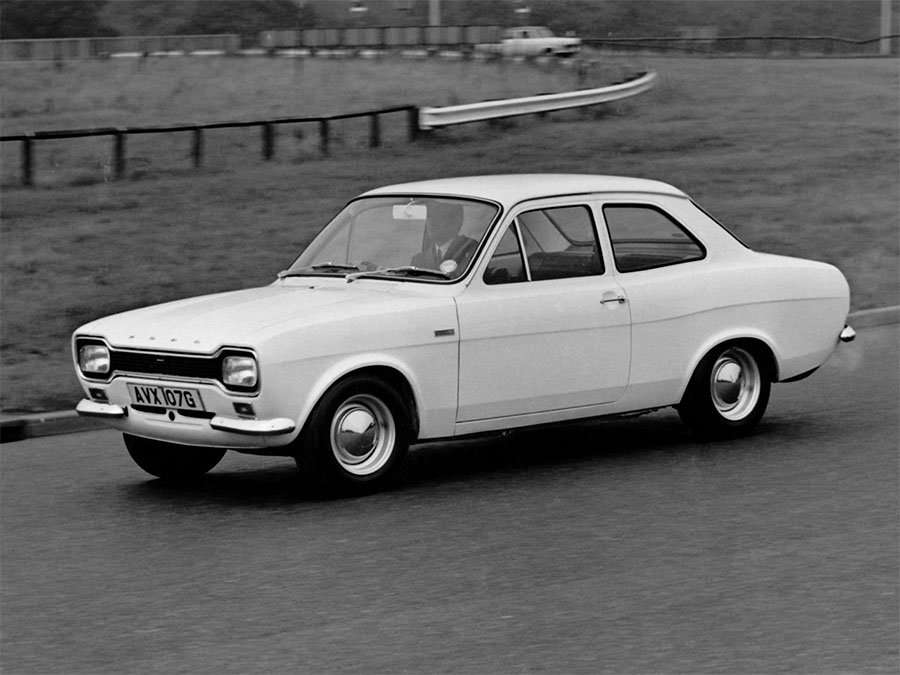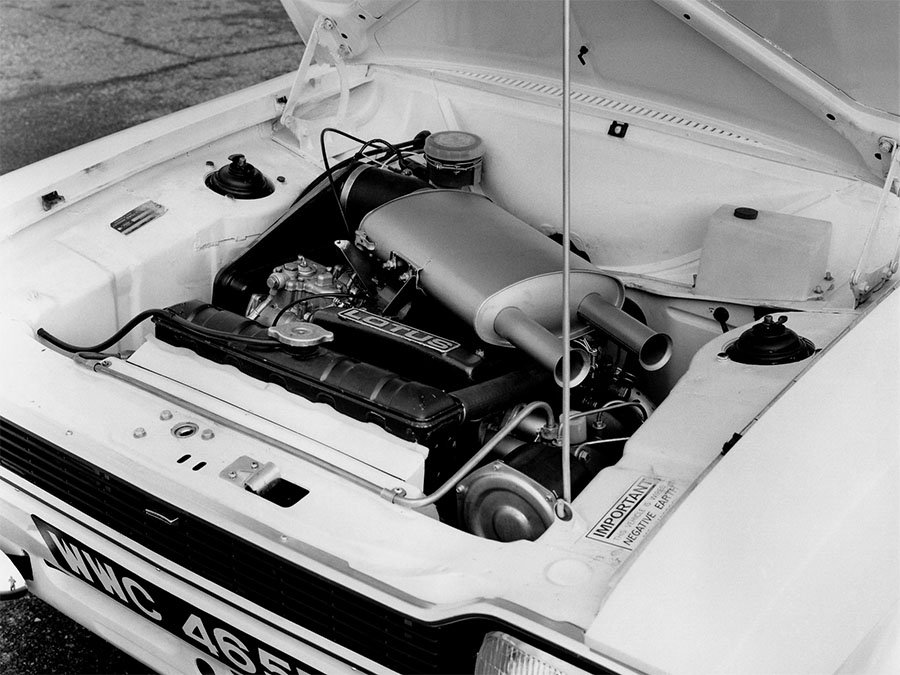Guide: Ford Escort Mk1 Twin Cam - a Historical & Technical Appraisal
/BACKGROUND
To replace the long-running Anglia, Ford developed the Escort which went on to become one of Europe’s best-selling cars.
Escort production began at Ford’s Halewood plant in England during the closing months of 1967. The new range of cars was presented to the press at an event in Morocco during January 1968. At this stage, the line up comprised solely of two-door saloons: the 1100 De Luxe, 1100 Super, 1300 Super, 1300 GT and the range-topping 1600 Twin Cam.
The idea for the Escort Twin Cam came from Ford’s Competition Department Manager, Henry Taylor.
Having witnessed one of the Escort prototypes being tested during early 1967, Taylor thought the new model would be an ideal platform for the venerable Lotus Twin Cam engine that powered the legendary Lotus Cortina.
As the Escort was smaller and considerably lighter than the Cortina, a Twin Cam-powered derivative was expected to be much faster and therefore a tantalising proposition for motor sport.
Walter Hayes (Ford’s Public Relations Officer) agreed and the board of directors subsequently gave the Escort Twin Cam the green light.
Work on the first of several prototypes began at Ford’s Boreham competition department during early 1967.
The new variant was conceived for use in the Group 3 and Group 2 motor sport classes which had a respective 500 and 1000 production requirement over a twelve month period. Once homologated, Twin Cams would be used to great effect in rallying and touring car events.
The first 25 cars were assembled at Boreham with the rest built at Ford’s Halewood factory on the same assembly line as the standard Escort. Here, once each bodyshell was painted and trimmed, it was transferred to a small workshop where a dozen or so workers fitted the special mechanical components.
Twin Cam production began on December 10th 1967. The car was approved for Group 3 competition from March 2nd 1968 and Group 2 from May 1st.
CHASSIS
Each Twin Cam was built around a special Type 49 version of the Escort’s pressed steel unitary bodyshell. This was an uprated and stiffened incarnation of the Type 48 as used by the two-door 1300 GT. As per every Mk1 Escort, both variants shared a 2400mm wheelbase and rear-wheel drive layout.
The Type 49 shell came with inner wing strut towers that had small flitch plate strengtheners and a wing-rail-to-strut-top strengthener on the top of the strut tower. The front suspension top plates had a double skin spot welded in place.
In terms of the floor, the centre and rear exhaust hangers were modified. The back of the floor had axle tramp bars mounted to it. Rear spring hangers were of the skidded type. A stone deflector bolted in place underneath the boot floor.
Because the wide Lotus cylinder head with its pair of sidedraught Weber carburettors fouled the right-hand side inner wing, offset engine mounts were used that pushed the nose of the engine towards the left-hand side of the car. The rear carburettor also fouled the brake master cylinder so this (along with the clutch master cylinder) was relocated to the front bulkhead.
Modifications were also made to the gearbox tunnel (the gear lever cavity was moved further back and a supplementary plate was welded in place).
To improve weight distribution (and because there was no longer sufficient space in the engine bay), the battery was moved to the left-hand side inner rear fender. Moving the battery to the boot meant that the spare wheel now had to be bolted to the boot floor (instead of the usual upright position) which resulted in reduced luggage space.
Also housed in the trunk was a 9 gallon (40.9-litre) fuel tank located in the right-hand side rear fender.
Independent front suspension was via coil springs with Capri-sourced MacPherson struts and track control arms. Ford also added an anti-roll bar.
The back end employed a live axle with semi-elliptic leaf springs, radius arms and double-action telescopic dampers. The biggest change compared to the 1300 GT was the adoption of the new radius arms which were essential to keep the beefier rear axle (sourced from the Lotus Cortina) in position.
As a consequence of the uprated suspension configuration, ride height was lower than the 1300 GT.
Brakes were hydraulically-operated and servo-assisted. Compared to the 1300 GT, the Twin Cam’s front discs were enlarged from 216mm to 244mm. The rear drums were enlarged from 203mm to 229mm.
5.5 x 13-inch pressed steel rims with chrome hub caps were imported from the Lotus Cortina. They were originally shod with Dunlop SP tyres.
ENGINE / TRANSMISSION
In the engine bay was the by now legendary Lotus Ford Twin Cam engine that had been created back in 1962. Since then it had been used in a variety of road and racing cars to great effect.
These inline four cylinder engines used a Ford pre-Crossflow iron block fitted with the Lotus cast-alloy dual overhead camshaft eight valve cylinder head. Displacement was 1558cc thanks to a bore and stroke of 82.57mm and 72.75mm respectively.
A 9.5:1 compression ratio was employed along with the familiar pair of twin-choke Weber 40 DCOE sidedraught carburettors. A special four-branch free-flow exhaust manifold was created specially for this application.
Peak output was 110bhp at 6000rpm and 107lb-ft at 4700rpm.
Each engine was delivered to Ford’s Halewood factory from the Lotus plant at Hethel.
Transmission was courtesy of a longer geared four-speed manual Type 3 2000E Cortina gearbox with a hydraulic clutch and conventional differential.
BODYWORK
At first glance, the Twin Cam’s all steel body looked like any other Mk1 Escort. However, there were some subtle features that were unique to this flagship variant.
At the front, Ford fitted a two-piece front bumper to allow increased airflow to the optional oil cooler.
A black instead of natural alloy front grille was also installed along with subtly flared arches.
Otherwise, aside from the Lotus Cortina wheels, the only external change was a Twin Cam badge affixed to the boot lid.
As per Ford’s more expensive Escort models, the Twin Cam initially used rectangular instead of circular headlights.
INTERIOR
Inside, the Twin Cam was broadly similar to the Escort GT albeit with a few special touches here and there.
Upholstery was black vinyl with fluted seat centres to match the door panels.
Instrumentation was housed an a six-gauge oval binnacle with a natural alloy fascia. The two large dials (an 8000rpm rev counter and 140mph speedometer) were flanked to the right-hand side by a cluster of four smaller read outs (fuel, oil pressure, water temperature and battery charge).
The windscreen washer control was a foot-operated button mounted on the floor to enable the driver to keep both hands on the steering wheel.
Standard equipment included wind-down windows, a heater / de-mister, two-speed wipers with non-lift blades, sun visors and an ashtray.
OPTIONS
Buyers could choose to enhance their cars with a range of optional equipment developed by the Ford Performance Centre at Boreham.
Included in the list of upgrades were bucket seats (fully reclining for the passenger together with a head rest), a close-ratio four-speed gearbox, a sump shield made of 0.5-inch duralumin with amour-plated skin, an auxiliary 9 gallon petrol tank that doubled the car’s fuel capacity, a high ratio steering rack, an oil cooler, uprated exhaust system and a choice of alternative axle ratios (4.7:1, 5.0:1 and 5.5:1).
Also included on the options list was a limited-slip differential, heavy duty suspension with re-rated springs, an adjustable telescopic rear shock absorber and high performance brake pads and linings.
Engines could be enhanced with special connecting rods, pistons, camshafts and valves. There was also an uprated oil pump.
To save weight, a fibreglass bonnet and boot lid could be specified along with lightweight housings for the clutch, gearbox extension and differential.
Instead of the standard wheels, customers could upgrade to a chromed sports type (also 5.5 x 13-inches) or magnesium alloy Minilite wheels (that were 6-inches wide).
WEIGHT / PERFORMANCE
Compared to the 1300 GT, the Escort Twin Cam was 20kg lighter (785kg as opposed to 805kg).
It had a top speed of 113mph and 0-62mph time of 8.7 seconds.
PRODUCTION CHANGES
In January 1969 (after 883 production cars had been built), Ford switched the original rectangular headlights to more effective circular units.
Early Twin Cams came with a bonnet that was opened via an exposed push button located on the front grille. In 1970 this was changed to a pull switch in the left-hand side of the cockpit. It changed again in 1971 to a pull switch on the right-hand side.
Another change that took place in 1970 was the switch from a solid panel between the boot and rear seat to one with five delta-shaped holes as per the rest of the Escort range. Around the same time, the single windscreen washer nozzle was ditched in favour of two.
Having originally only been available in Ermine White with a Black vinyl interior, Ford ultimately went on to offer a range of 13 exterior colours and eight interior upholsteries. Side stripes and supplementary spot lights were later added to the options list.
SPORTING SUCCESS
The Twin Cam kick-started the Escort’s stellar career in motor sport.
In addition to Frank Gardner’s victory with an Alan Mann Twin Cam in the 1968 British Touring Car Championship, the model picked up an array of rally victories to include the 1968 Circuit of Ireland (Roger Clark / Jim Porter), the 1968 Tulip Rally (Roger Clark / Jim Porter – Group 3 class), the 1968 Austrian Alpine Rally (Roger Clark / Jim Porter), the 1968 1000 Lakes Rally (Hannu Mikkola / Anssi Jarvi), the 1969 Austrian Alpine Rally (Hannu Mikkola / Mike Wood), the 1969 1000 Lakes Rally (Hannu Mikkola / Anssi Jarvi), the 1969 Welsh Rally (Ove Andresson / Gunnar Palm), the 1969 Tulip Rally (Gilbert Stapelaere / Andre Aerts), the 1969 Rally of the Incas (Tony Fall / Gunnar Palm), the 1969 Circuit of Ireland (Roger Clark / Jim Porter) and the 1970 1000 Lakes Rally (Hannu Mikkola / Gunnar Palm).
This success led to the creation of the Ford Advanced Vehicle Operations department in Aveley in January 1970. From here, most subsequent high performance Escort variants were developed and / or assembled.
END OF PRODUCTION
Production of the Escort Twin Cam was discontinued in June 1971.
By this time, Ford had already introduced a successor: the Escort RS1600 (produced from April 1970) which most notably came with a more potent Cosworth BDA power unit to replace the long-running Lotus Twin Cam.
In total, Ford built 1263 Escort Twin Cams between December 1967 and June 1971. Of these, 883 were completed with the original rectangular headlights followed by an additional 380 with circular headlights.
Text copyright: Supercar Nostalgia
Photo copyright: Ford - https://www.ford.com



































